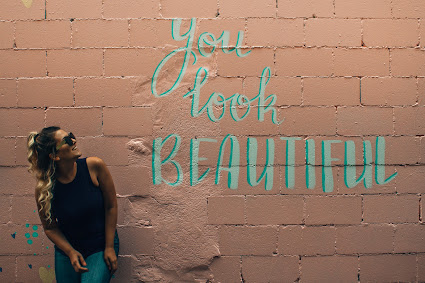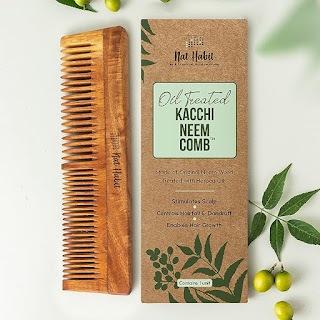Introduction: Embracing the Beauty of Curly Hair
The texture of curly hair is distinct and varied, exhibiting a range of patterns from loose waves to tightly coiled hair. Curls have unique qualities that set them apart from straight hair and necessitate a customized care routine. The structure of curly hair, with its distinctive curl patterns and susceptibility to dryness, sets the stage for a hair journey that is both beautiful and distinctive. We'll examine the benefits of curly hair in this blog, including its types, structures, and the best ways to take care of it so that you can appreciate and love those gorgeous curls. Whether you've always had curly hair or just now beginning to accept your natural texture, with the help of this instruction, you will be able to take full advantage of your curls and develop a profound respect for their distinct beauty.
Diversity of curly hair from loose waves to tight coils
The Andre Walker Hair Typing System, which divides hair into
four primary types (Types 2 to 4) according to curl shape, is frequently used
to classify these various curl patterns. An outline of the variety found within
these categories is shown below:
 |
| Celebrating the Beauty of Loose Waves to tight Coils |
Type 2: Wavy Hair
2A: Loose Waves: These soft, S-shaped waves resemble
straight hair more closely.
2B: Defined Waves: These waves are more definite and could
end in a tiny curl.
2C: Classic Waves: These waves frequently have a few curls
and have a more prominent "S" form.
Type 3: Curly Hair
3A: Loose Curls - Clearly defined, bouncy curls with a
sidewalk chalk-like diameter.
3B: Tighter Curls - The curls are stronger and resemble a
marker's circumference.
3C: Coily Curls: Corkscrew curls that resemble pencils in
circumference.
Type 4: Coily Hair
4A: "S"-shaped Coils: Clearly defined, little
coils arranged in a "S" pattern.
4B: Z-shaped Coils:
4C: Cramped Coils: These coils may lack a definite curl
pattern due to their close packing.
Understanding the many types of curls is essential for customizing a hair care regimen that targets specific requirements like frizz control, definition, and moisture preservation. Every variety of curly hair has its own beauty and set of difficulties, and by accepting this variation, people can recognize and enjoy the distinctive qualities of their natural texture.
The Importance of embracing natural curls and self-expression
Accepting your natural curls is a significant act of
self-expression and acceptance that goes beyond simple hair maintenance. The
following are some arguments in Favor of embracing natural curls:
 |
| Accept your Natural Curls "Veiled in Nature's Mystery" |
1. Openness:
Accepting one's true self entails embracing one's natural
curls.
A person's acceptance of their natural curls is a step toward being authentic and respectful to themselves. Natural curls are a person's intrinsic qualities.
2. Cultural Reflection:
Curly hair has a strong symbolic meaning for many people's
cultural identities. Accepting one's natural curls can showcase pride in one's background and a means to honor and connect with one's cultural
roots.
3. Expression of Oneself:
Natural curls offer an expressive canvas for the individual.
Adopting a curly hairstyle or playing with color is only one way that accepting
curls enables people to express their individuality and individuality via their
hair journey.
4. Boost Your Confidence:
Embracing and accepting one's natural curls can significantly increase one's confidence.
5. Confidence Boost:
Accepting and embracing natural curls can significantly boost confidence. It is a statement of self-love and self-worth, empowering individuals to feel proud and confident in their own skin.
6. Improving Hair Practices:
Healthy hair habits are frequently the result of accepting
one's natural curls. Individuals can embrace care practices that improve the
health and beauty of their natural curls rather than continuously attempting to
fit in with a different hair texture.
7. Motivating Others:
People who accept their natural curls can encourage others to follow suit. It spreads, inspiring a community to be self-assured and proud of their distinctive hair textures.
Tips for Healthy Curls
1. Preventing Heat Damage:
×
Use heat styling tools as little as possible.
×
Use substitutes for applying heat to achieve
defined curls.
2. Trimming & Maintenance:
×
To avoid split ends and preserve the general
health of your curls, schedule routine cuts every two to three months.
×
Trimming encourages a more pronounced and
consistent curl pattern by removing broken or uneven ends.
3. Pineapple:
×
One method of preserving hair at night is to use
pineapple. To minimize friction and curls on your pillow, gather your hair into
a loose, high ponytail on top of your head before going to bed.
×
Use a silk or satin scrunchie to prevent
shattering.
4. Finger Coiling:
If individual curls lose definition, use the finger-coiling method to reshape them. To encourage the curl pattern, take a tiny portion of hair, apply styling product, and coil the strand around your finger.
 |
Enhance your hair care regimen with the Kacchi Neem Wooden Comb from Nat Habit. This dual-tooth comb, designed for all hair types, blends conventional wisdom with contemporary hair care. To give your hair a natural shine, click the link! #HairCare #NaturalBeauty #AmazonFinds
5. Steer Clear of Over-Manipulation:
× Minimize Excessive touching, combing, or brushing disrupts your natural curl pattern and leads to frizz.
×
When necessary, untangle gently with your
fingers or a wide-tooth comb.
6. Refresh with Product and Water:
× To recover moisture and realign curls, mist your hair with a mixture of water and leave-in conditioner On non-wash days.
×
To redefine curls and lessen frizz, use a tiny
bit of style product.
You can keep your natural texture defined and healthy between haircuts by using these strategies in your hair care routine to help
preserve the shape and intensity of your curls.


